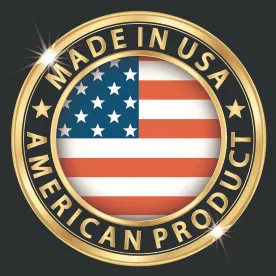On Friday, May 12, 2023, the Department of Treasury (Treasury) and the Internal Revenue Service (IRS) issued Notice 2023-38 (the Notice) providing guidance regarding qualification for the domestic content bonus credit, which was added by the Inflation Reduction Act of 2022 (IRA), and is available to certain renewable energy projects that qualify for the production tax credit (PTC) and investment tax credit (ITC) if the project satisfies the domestic content requirements.
Background:
The domestic content bonus credit provision of the IRA provides a 10% tax credit boost for clean energy developers of and investors in qualified facilities that are PTC- or ITC-eligible (or both) or energy generation or storage projects (Applicable Projects) that can certify that all of their iron and steel, and, subject to the Adjusted Percentage Rule (discussed below), all of the manufactured products that are components of their projects, are made in America (the Domestic Content Bonus Credit). The Notice provides important guidance that the Treasury and the IRS intend to include in proposed Treasury Regulations regarding the requirements that taxpayers must satisfy to qualify for the Domestic Content Bonus Credit (the Domestic Content Requirements) and the related recordkeeping and certification requirements.
Domestic Content Requirement:
An Applicable Project is eligible for a Domestic Content Bonus Credit if the Applicable Project satisfies the Domestic Content Requirement and the taxpayer timely submits to the IRS the certification described in the Notice. An Applicable Project satisfies the Domestic Content Requirement if the Steel or Iron Requirement and the Manufactured Products Requirement (described below) are satisfied.
Steel or Iron Requirement
-
The Steel or Iron Requirement is met if all manufacturing processes with respect to any steel or iron materials that are incorporated into an Applicable Project take place in the U.S., except for certain processes involving the refinement of steel additives. The Steel or Iron Requirement applies to components that are incorporated into an Applicable Project that are construction materials made primarily of steel or iron and are “structural in function.”
-
The Steel or Iron Requirement does not apply to components or subcomponents of manufactured products. For example, items such as nuts, bolts, screws, washers, cabinets, covers, shelves, clamps, fittings, sleeves, adapters, tie wire, spacers, door hinges, and similar items that are made primarily of steel or iron but are not “structural in function” are not subject to the Steel or Iron Requirement. Components that are “structural in function” are treated as steel or iron, and those that are not “structural in function” may constitute a component (or subcomponent) of a manufactured product. Although the language of the Notice provides some additional clarity regarding this distinction, it likely will not resolve all questions that arise with respect to specific components of a project.
Manufactured Products Requirement
The Notice provides clarification on a number of issues related to manufactured products that are components of a project. Generally, a manufactured product is considered to be produced in the U.S. if (i) all manufacturing processes for the manufactured product take place in the U.S., and (ii) all of the components of such manufactured product are of U.S. origin. A manufactured product component is considered to be of U.S. origin if it is manufactured in the U.S., regardless of the origin of its subcomponents (i.e., foreign-sourced subcomponents will not cause a manufactured product that is otherwise treated as one of U.S. origin to fail to be treated as such).
As noted above, all of the manufactured products included in an Applicable Project must be produced in the U.S. The Notice applies an “Adjusted Percentage Rule” under which all manufactured products included in a project are deemed to be produced in the U.S. if the cost of U.S. manufactured products and components for such project represents at least the “applicable percentage” of the total cost of all manufactured products in the project (taking into account only direct costs, and not indirect costs, like labor to incorporate a manufactured product into a project). The applicable percentage is currently 40% (increasing to 55% for projects that begin construction after 2026) or, in the case of offshore wind facilities, 20% (increasing to 55% for projects that begin construction after 2027).
Of particular interest, for purposes of the Adjusted Percentage Rule, the Notice includes in the cost of U.S.-manufactured products and components, not only the cost of U.S.-manufactured products (including components), but also includes the cost of non-U.S.-manufactured products to the extent that such cost is attributable to U.S.-produced components of such product. This inclusion of at least some of the costs of non-U.S.-manufactured products can put taxpayers in the challenging position of trying to look through to the underlying costs of the manufacturer to determine the portion of such costs that are attributable to U.S.-manufactured components. This will require developers to request manufacturers provide and stand behind certifications as to their cost breakdowns, which presumably will come at a premium. Moreover, considering that a primary purpose of the domestic content bonus credit was to encourage the development of a U.S.-based supply chain for clean energy technologies, there is at least some concern that the rules set forth in the Notice may present a missed opportunity, as they appear to permit the Domestic Content Requirement to be satisfied with foreign manufactured subcomponents, such as polysilicon wafers, as long as those subcomponents are incorporated into a U.S.-manufactured component.
Safe Harbor for Classifications of Certain Applicable Project Components
The Treasury Department and the IRS include a safe harbor with respect to the classification of certain manufactured products (including components and subcomponents) that are subject to either the Steel or Iron Requirement or the Manufactured Products Requirement (including items that may be found in utility-scale photovoltaic systems, land-based wind facilities, offshore wind facilities, and battery energy storage technologies).
Retrofitted Projects:
In General. An Applicable Project may qualify as originally placed in service even though it contains some used property, provided the fair market value of the used property is not more than 20 percent of the Applicable Project's total value calculated by adding the cost of the new property to the value of the used property (80/20 Rule). The cost of new property includes all costs properly included in the depreciable basis of the new property.
Application to the Domestic Content Requirement. An Applicable Project that is placed in service after December 31, 2022, and meets the 80/20 Rule is eligible for a Domestic Content Bonus Credit if the new property in the Applicable Project meets the Domestic Content Requirement and the taxpayer complies with the requirements described in the Notice.
Certification Requirements:
Certification Procedure. A taxpayer must submit to the IRS a statement certifying that for each Applicable Project for which the taxpayer is reporting a Domestic Content Bonus Credit, any steel or iron items subject to the Steel or Iron Requirement or Manufactured Product that is a component of the Applicable Project upon completion of construction was produced in the U.S. (Domestic Content Certification Statement). The Notice provides a list of detailed information that the Domestic Content Certification Statement must include with respect to each Applicable Project.
Timing of Certification. A taxpayer must certify that an Applicable Project meets the Domestic Content Requirement as of the date the Applicable Project is placed in service.
The Treasury Department and the IRS intend to propose that the forthcoming proposed Treasury Regulations will apply to taxable years ending after May 12, 2023. Taxpayers may rely on the rules described in the Notice for the Domestic Content Bonus Credit requirements for any qualified facility, energy project, or energy storage technology, the construction of which begins before the date that is 90 days after the date of publication of the forthcoming proposed Treasury Regulations in the Federal Register.





 />i
/>i

